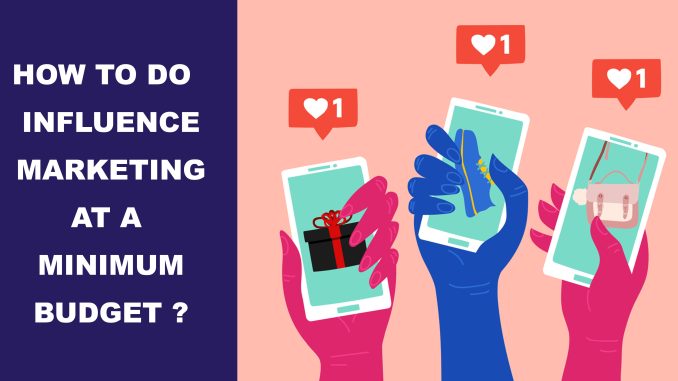
In today’s dynamic digital landscape, influencer marketing has emerged as a powerhouse strategy for brands seeking to connect with their target audiences in an authentic and impactful way. The perception, however, often lingers that it’s an exclusive playground for big corporations with deep pockets. This notion couldn’t be further from the truth. In reality, businesses of all sizes, even those operating on a shoestring budget, can leverage the immense potential of influencer marketing to achieve significant brand awareness, engagement, and even direct sales. The key lies in smart strategy, creative execution, and a clear understanding of where to focus limited resources for maximum impact.
The fundamental shift in thinking when approaching influencer marketing on a budget is to move away from the allure of celebrity mega-influencers. While their reach is undeniable, their engagement rates are often diluted, and their fees can be prohibitive for smaller enterprises. Instead, the focus should pivot towards the thriving ecosystem of micro- and nano-influencers. These individuals, typically with follower counts ranging from a few thousand to around one hundred thousand, possess a distinct advantage: a highly engaged and niche audience. They have cultivated genuine trust and a sense of community with their followers, often seen as relatable peers rather than distant celebrities. When a micro-influencer genuinely recommends a product or service, it carries significantly more weight and authenticity, leading to higher conversion rates and a more favourable return on investment.
Consider, for instance, a small artisan coffee roaster looking to expand its reach. Partnering with a celebrity chef who occasionally posts about coffee might generate a lot of impressions, but the impact on actual sales might be minimal. Conversely, collaborating with a local coffee blogger or a barista with a dedicated following of passionate coffee enthusiasts, even if their audience is smaller, is likely to yield far better results. These micro-influencers live and breathe their niche, and their recommendations are perceived as highly credible by their audience, who are already predisposed to be interested in coffee-related products. This targeted approach ensures that your message reaches the *right* people, not just *more* people, which is crucial when resources are limited.
One of the most cost-effective ways to initiate contact and forge partnerships with micro-influencers is through product gifting or service trades. Many micro-influencers are genuinely enthusiastic about discovering and sharing new products that align with their niche and appeal to their audience. Offering a complimentary product or a free trial of a service in exchange for an honest review or feature can be a powerful starting point. This approach minimises direct financial outlay while still providing valuable exposure. For example, a new skincare brand could send out PR packages to a select group of beauty micro-influencers, hoping that their genuine excitement translates into authentic content. The beauty of this strategy lies in its reciprocity; the influencer gains new content and products, and the brand gains organic exposure and validation.
Beyond gifting, creative compensation models can further stretch a limited budget. Affiliate marketing, for instance, presents a win-win scenario. By providing influencers with unique discount codes or affiliate links, brands only pay a commission on the sales directly generated by the influencer’s efforts. This performance-based model aligns the interests of both parties and ensures that marketing spend is directly tied to measurable outcomes. A small fashion boutique, for example, could partner with local style bloggers, offering them a percentage of sales made through their unique discount codes. This not only incentivises the influencer to promote the brand effectively but also provides clear data on the campaign’s success.
Negotiation is another vital skill for budget-conscious influencer marketing. Remember that influencers are often small business owners themselves, and they are typically open to discussing terms. Transparency about your budget limitations can often lead to creative solutions. Instead of a flat fee, perhaps a combination of a smaller fee and product gifting, or a long-term partnership with staggered payments, could be mutually beneficial. Be prepared to clearly outline your expectations, including the type of content, posting frequency, and desired messaging. Flexibility on deliverables can also be a strong negotiation point; an influencer might be willing to offer a slightly lower rate if you require fewer posts or are open to different content formats. Building rapport and demonstrating genuine interest in their work before initiating a partnership can also significantly improve negotiation outcomes. Influencers are more likely to collaborate with brands they feel a connection with and whose values align with their own.
Finally, maximising the longevity and impact of influencer-generated content is crucial for budget efficiency. Don’t view an influencer post as a one-and-done transaction. With proper usage rights secured, repurpose the high-quality content across your own marketing channels – your website, email campaigns, organic social media, and even paid ads. This extends the reach and value of each piece of content significantly without incurring additional creative costs. The authentic, user-generated feel of influencer content often resonates strongly with audiences, making it incredibly effective when repurposed.
In essence, influencer marketing on a budget is not about doing less, but about doing it smarter. By focusing on micro- and nano-influencers, embracing creative compensation models, mastering negotiation, and strategically repurposing content, even the smallest businesses can unlock the immense power of authentic word-of-mouth marketing in the digital age. It’s a testament to the idea that ingenuity and genuine connection can often outweigh lavish spending in the pursuit of meaningful brand growth.